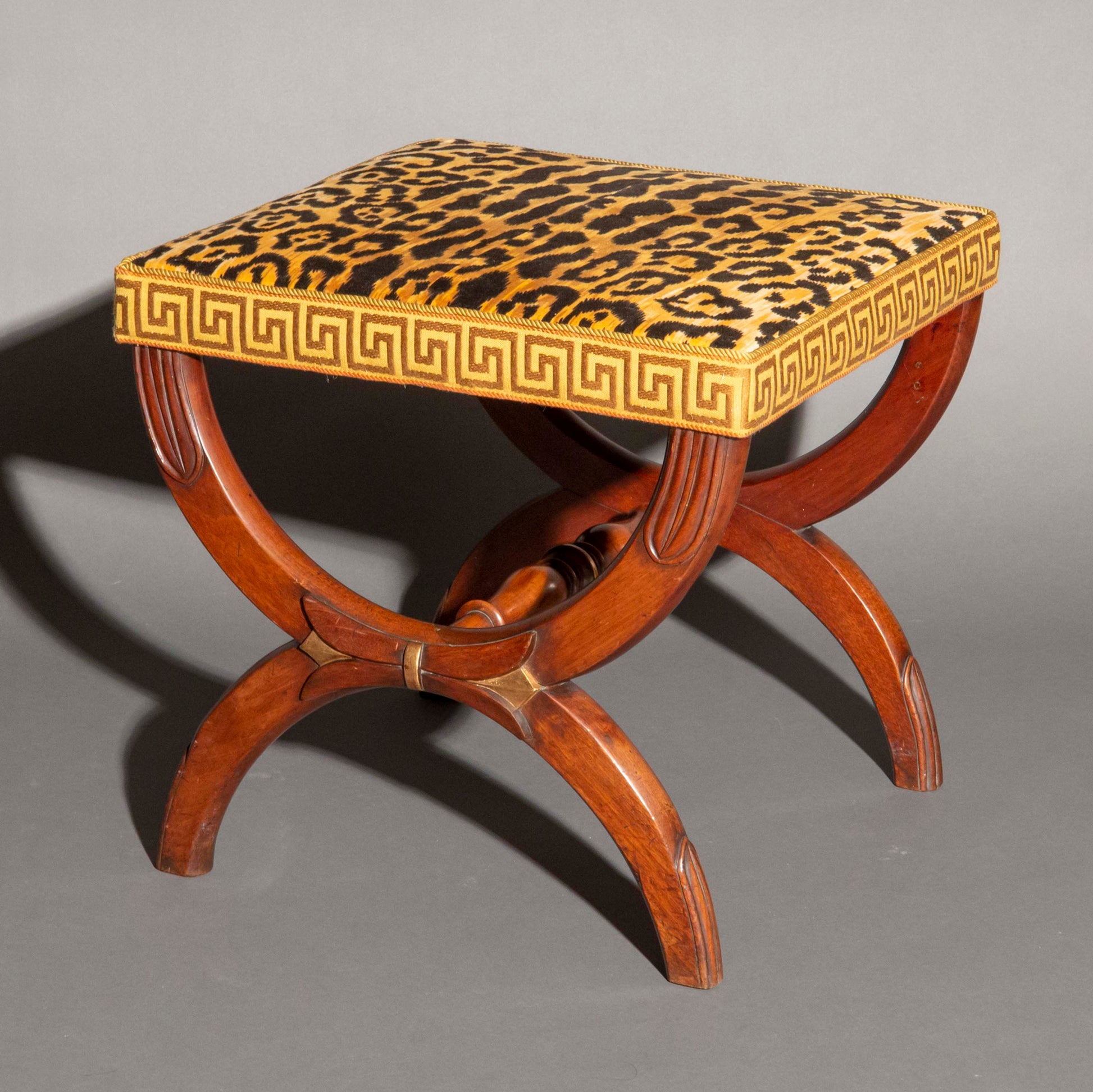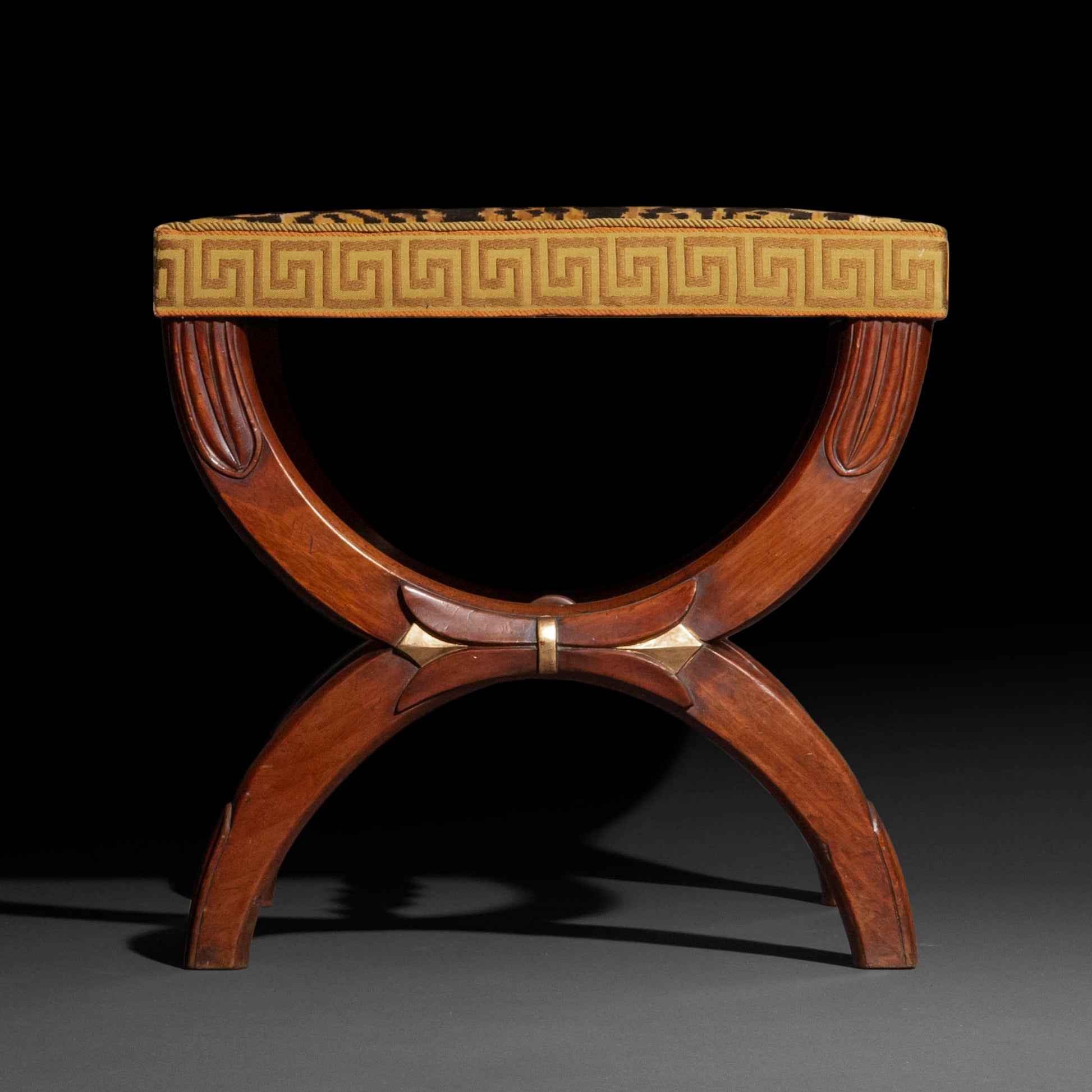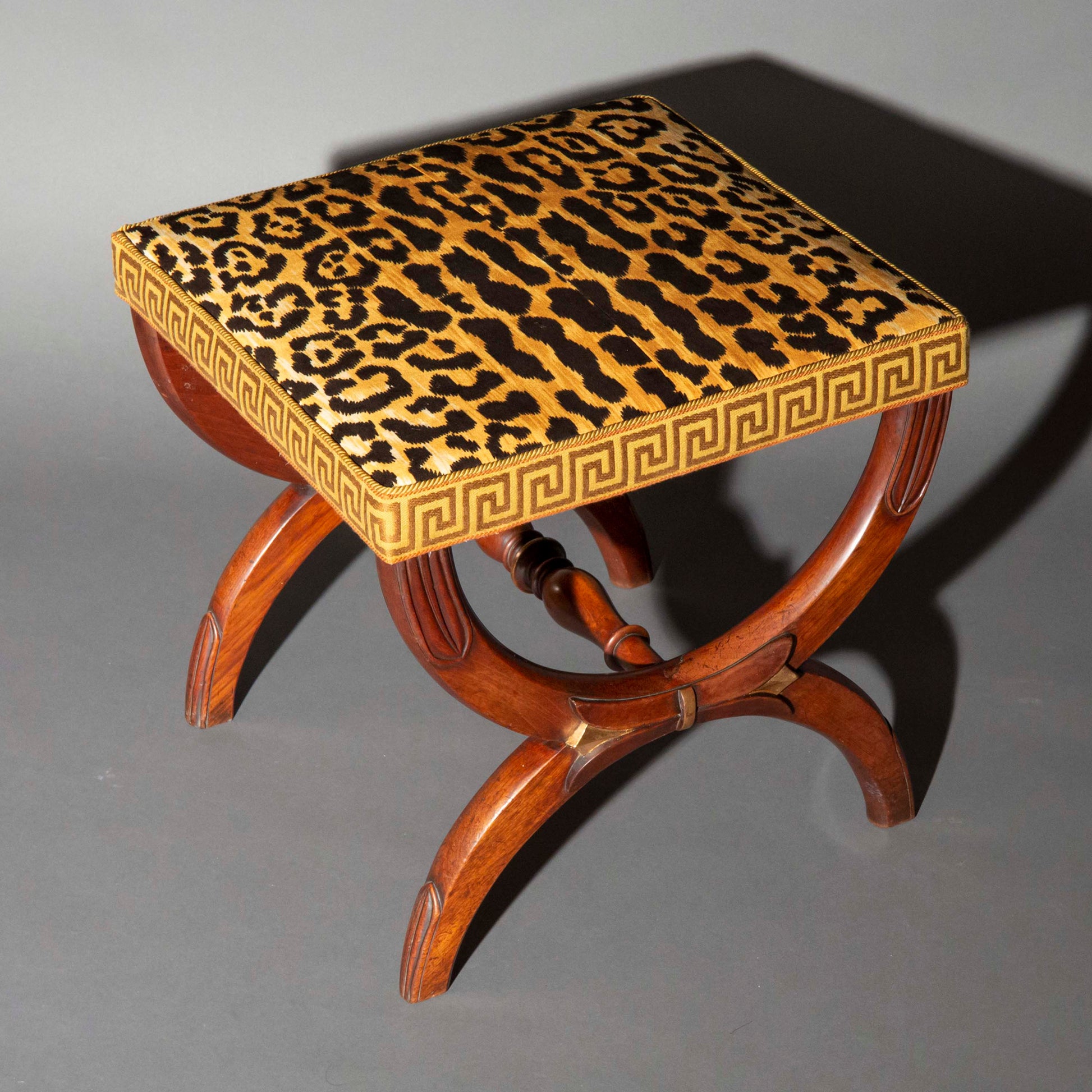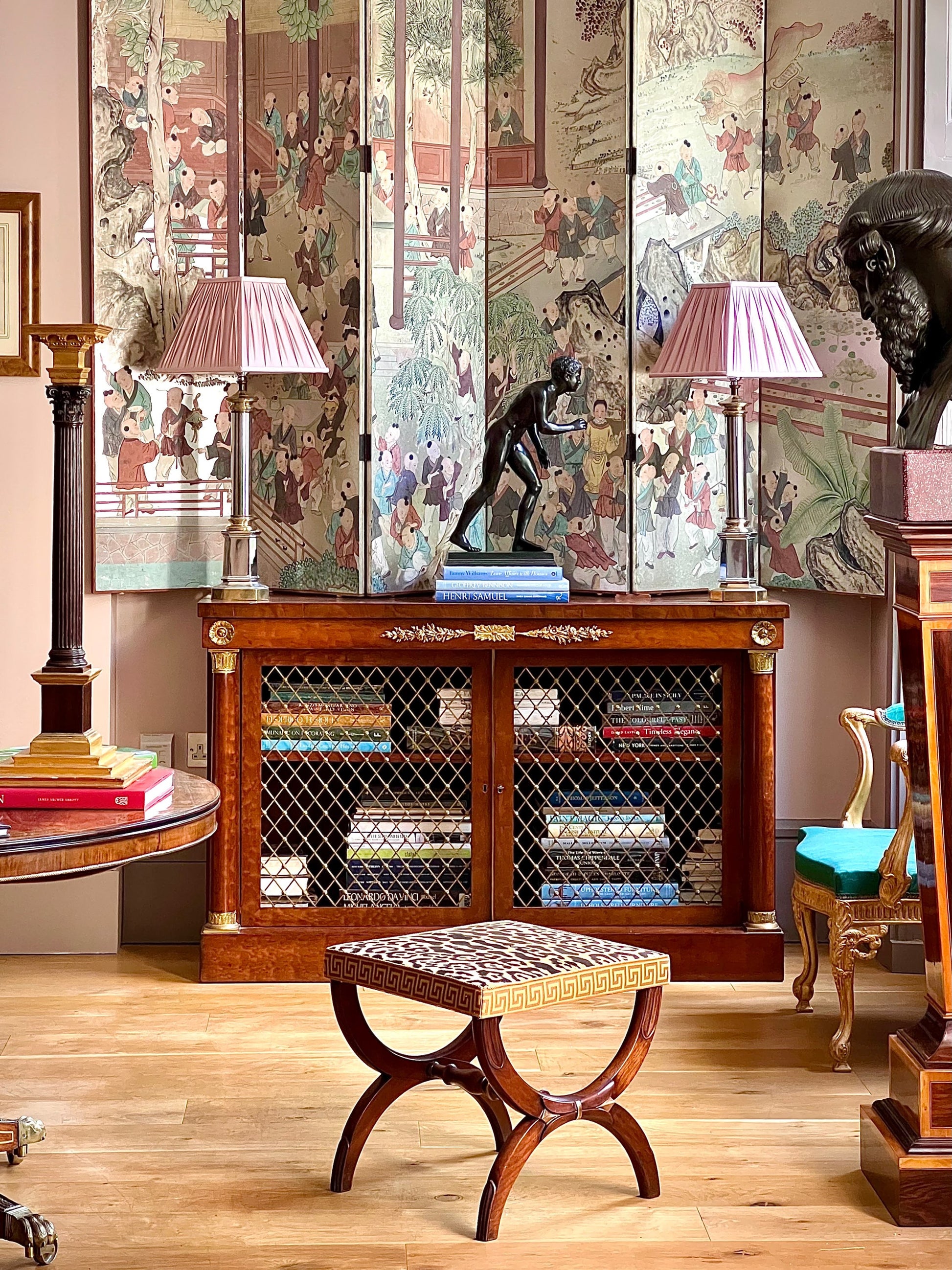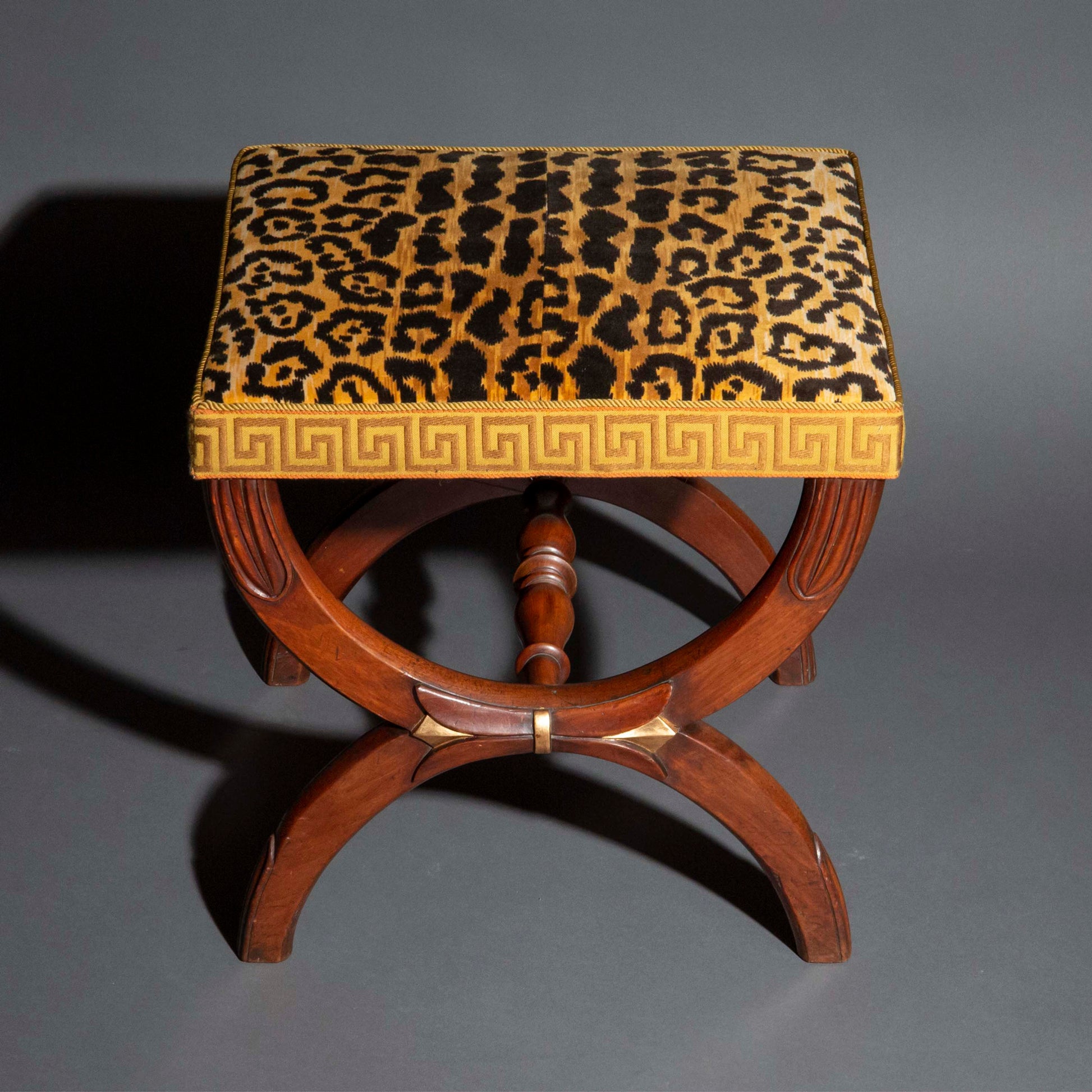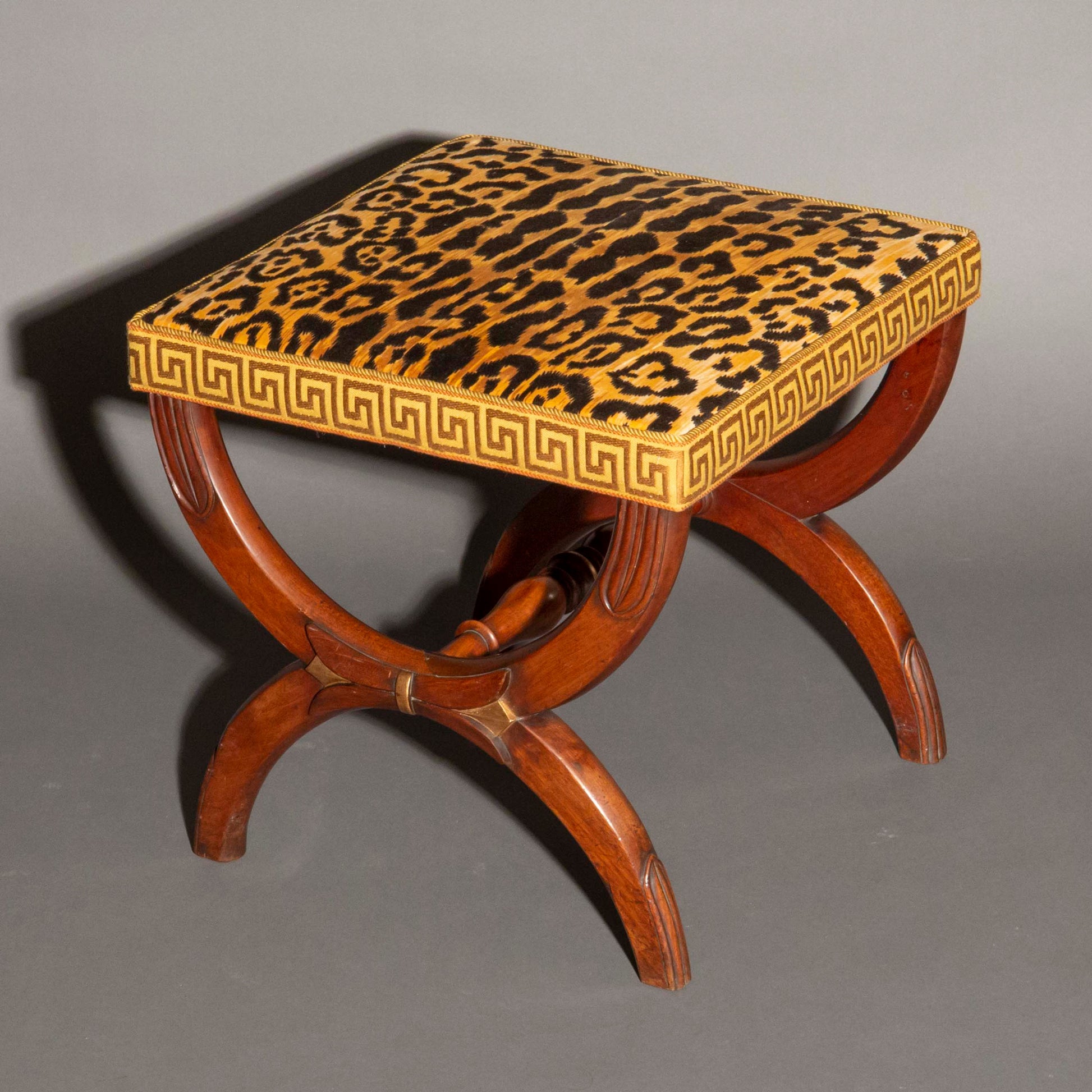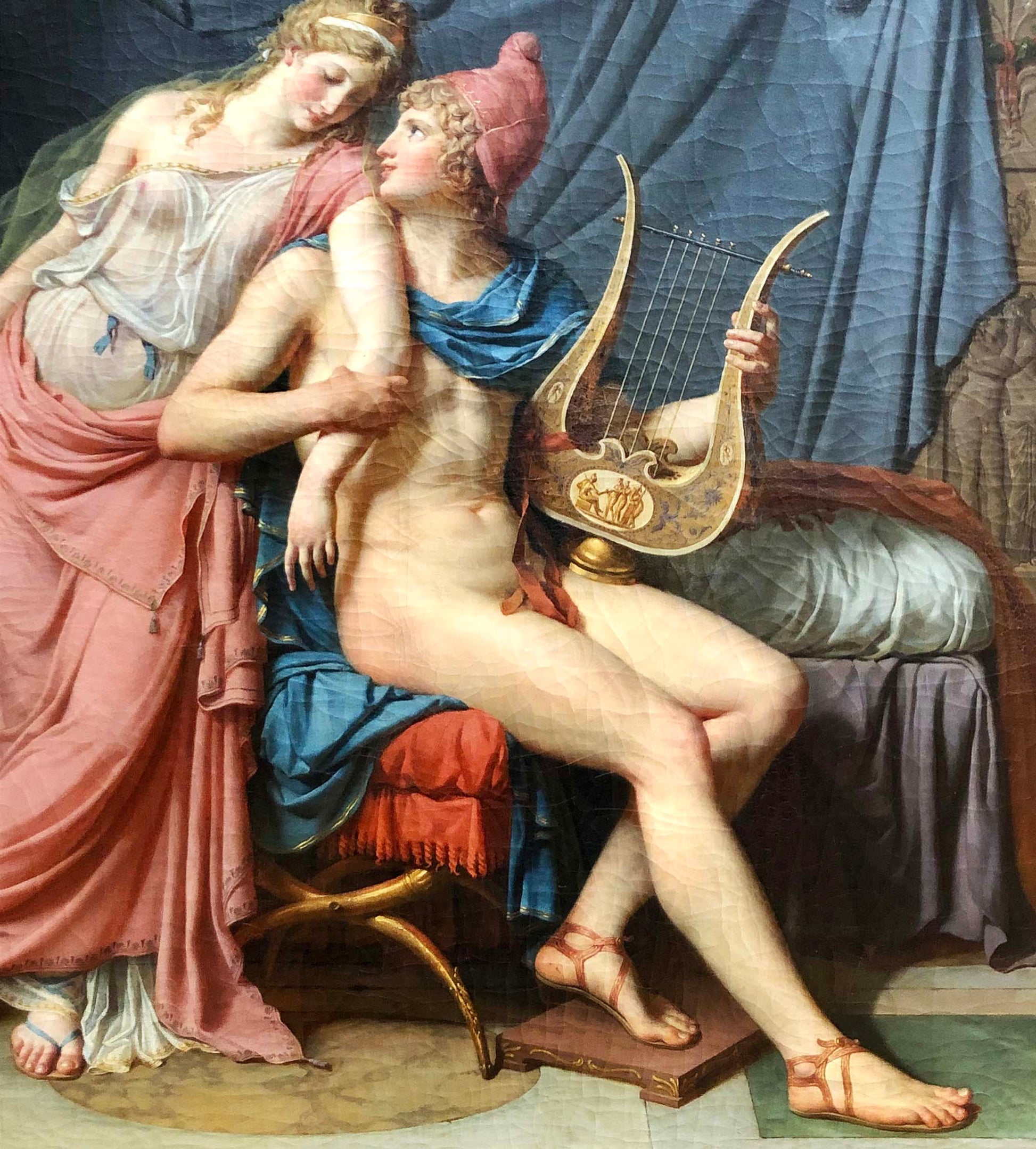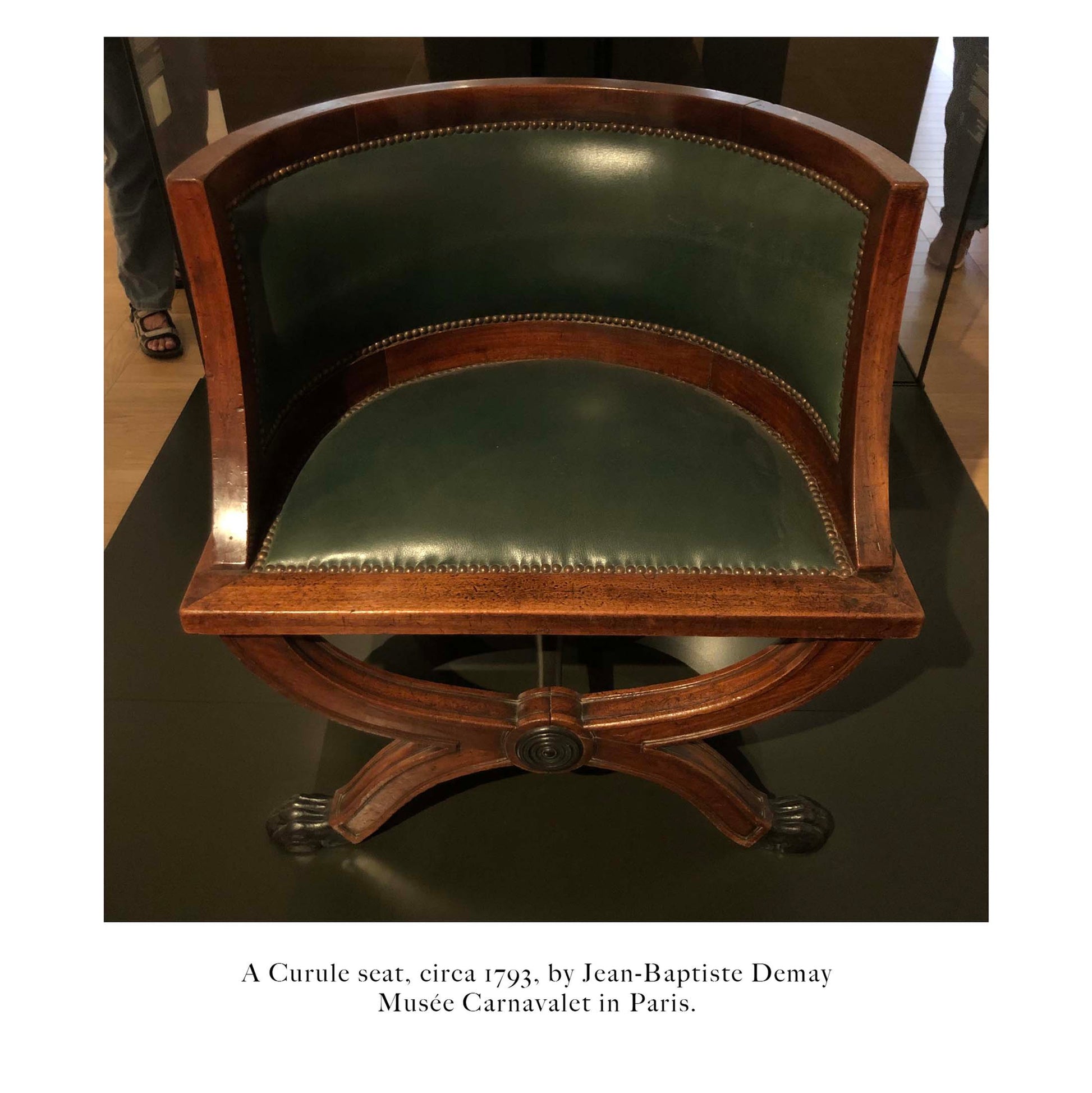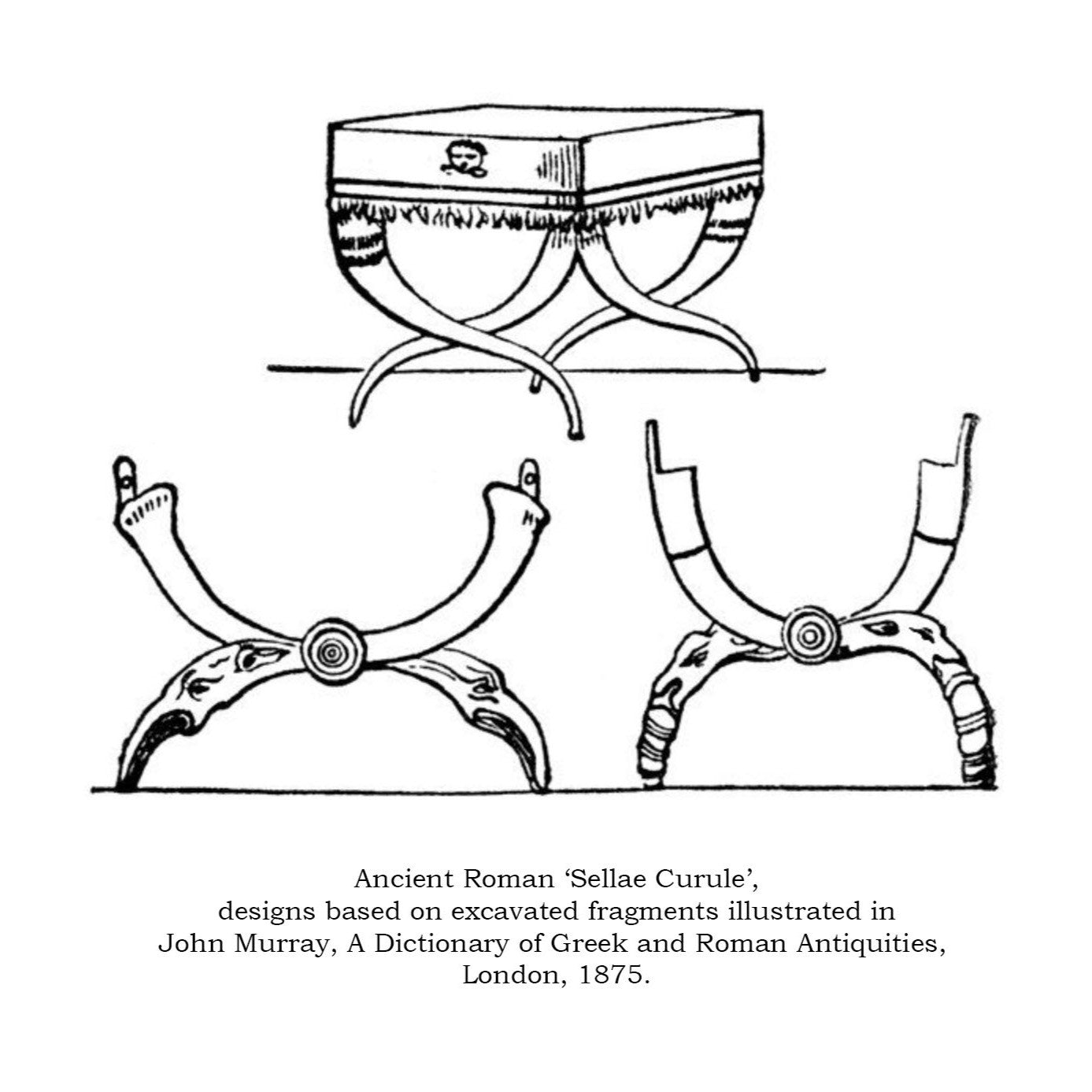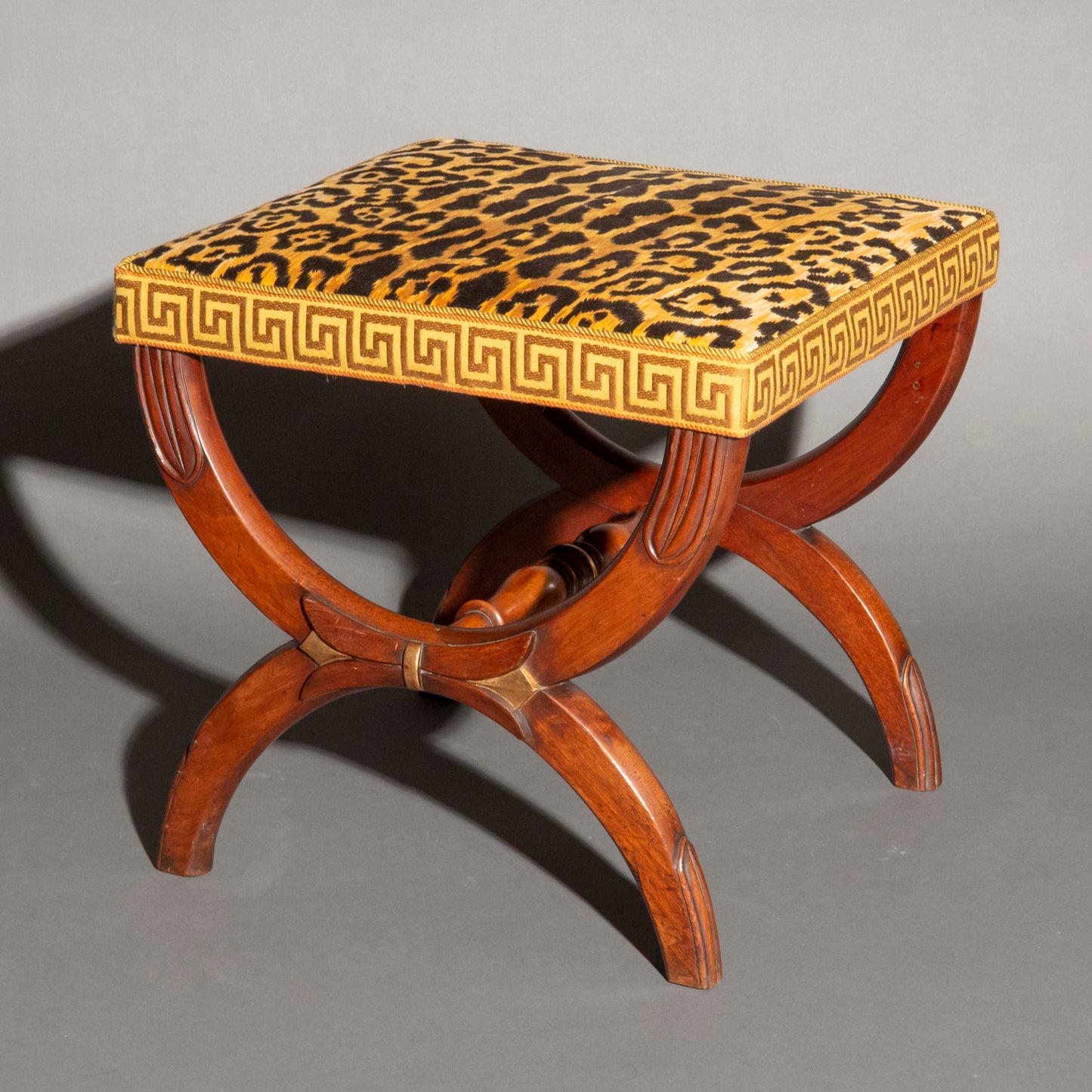
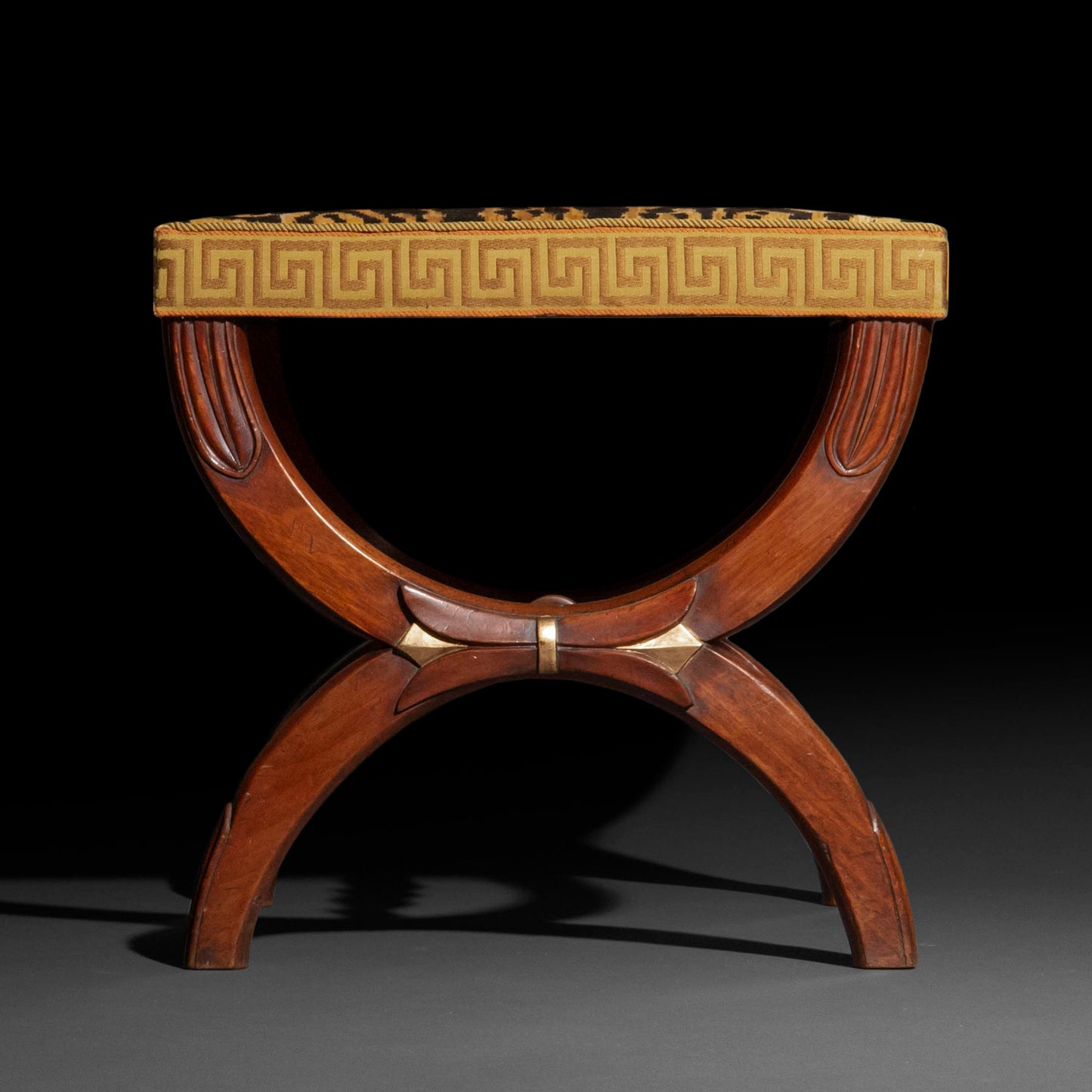
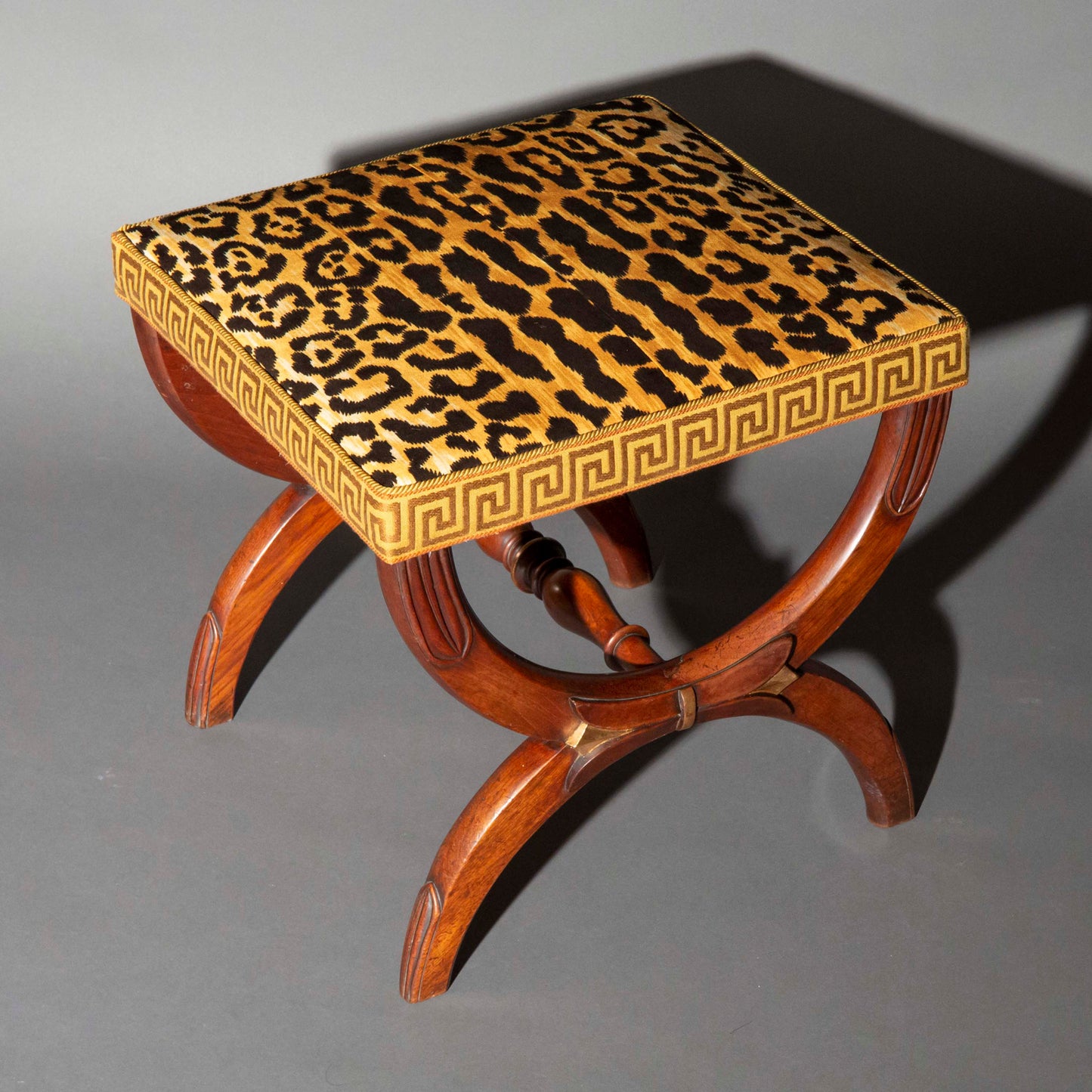
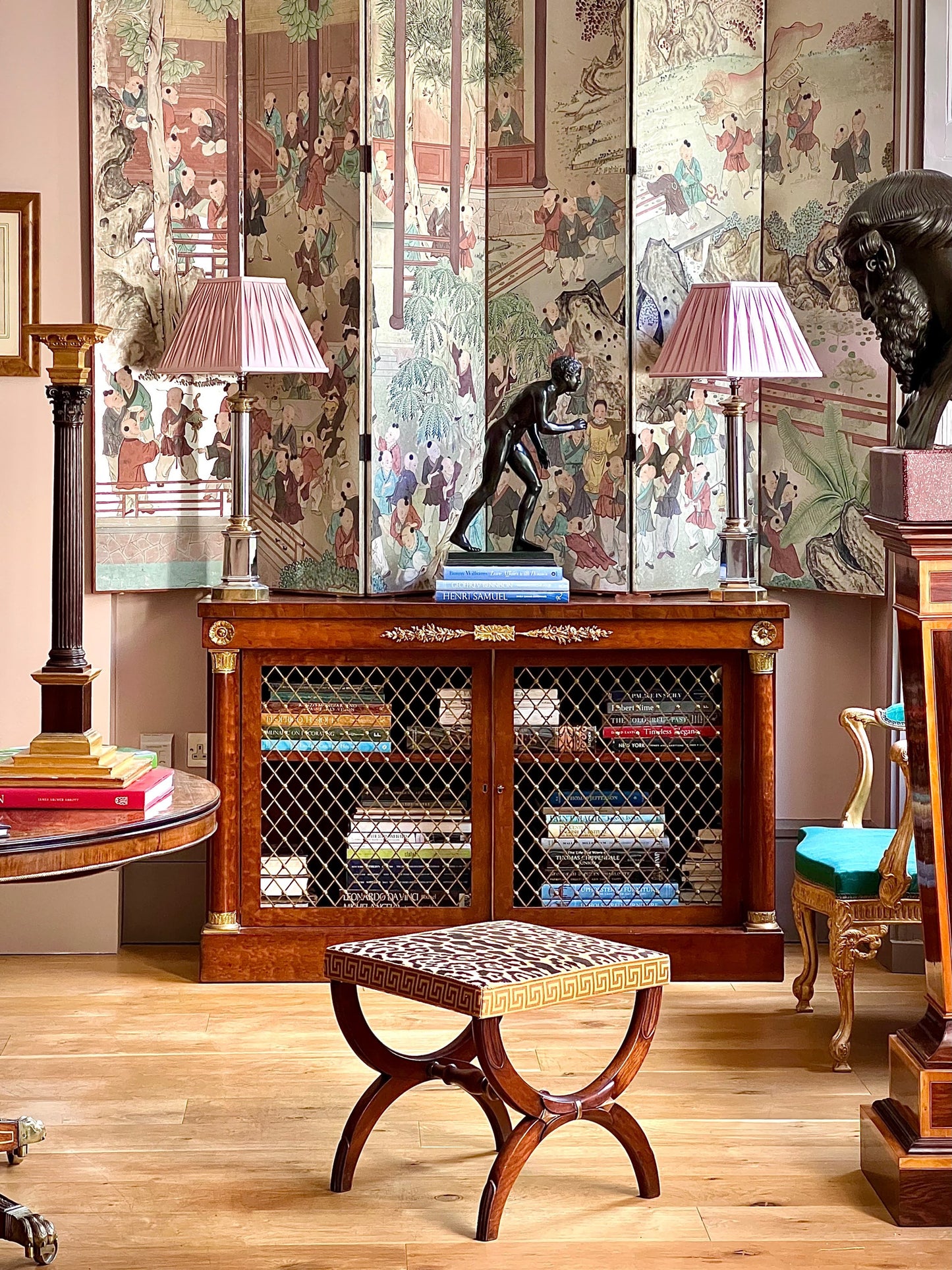
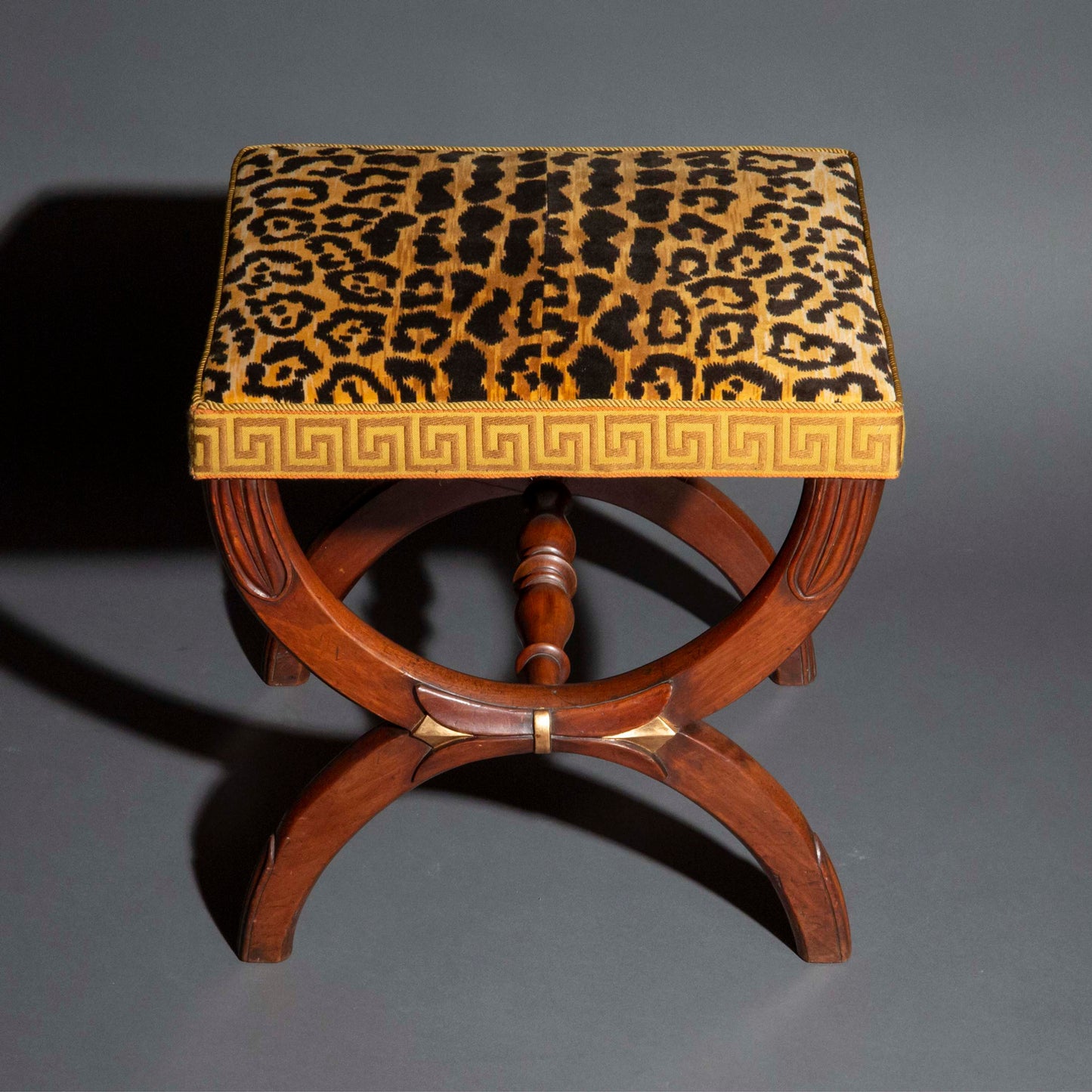
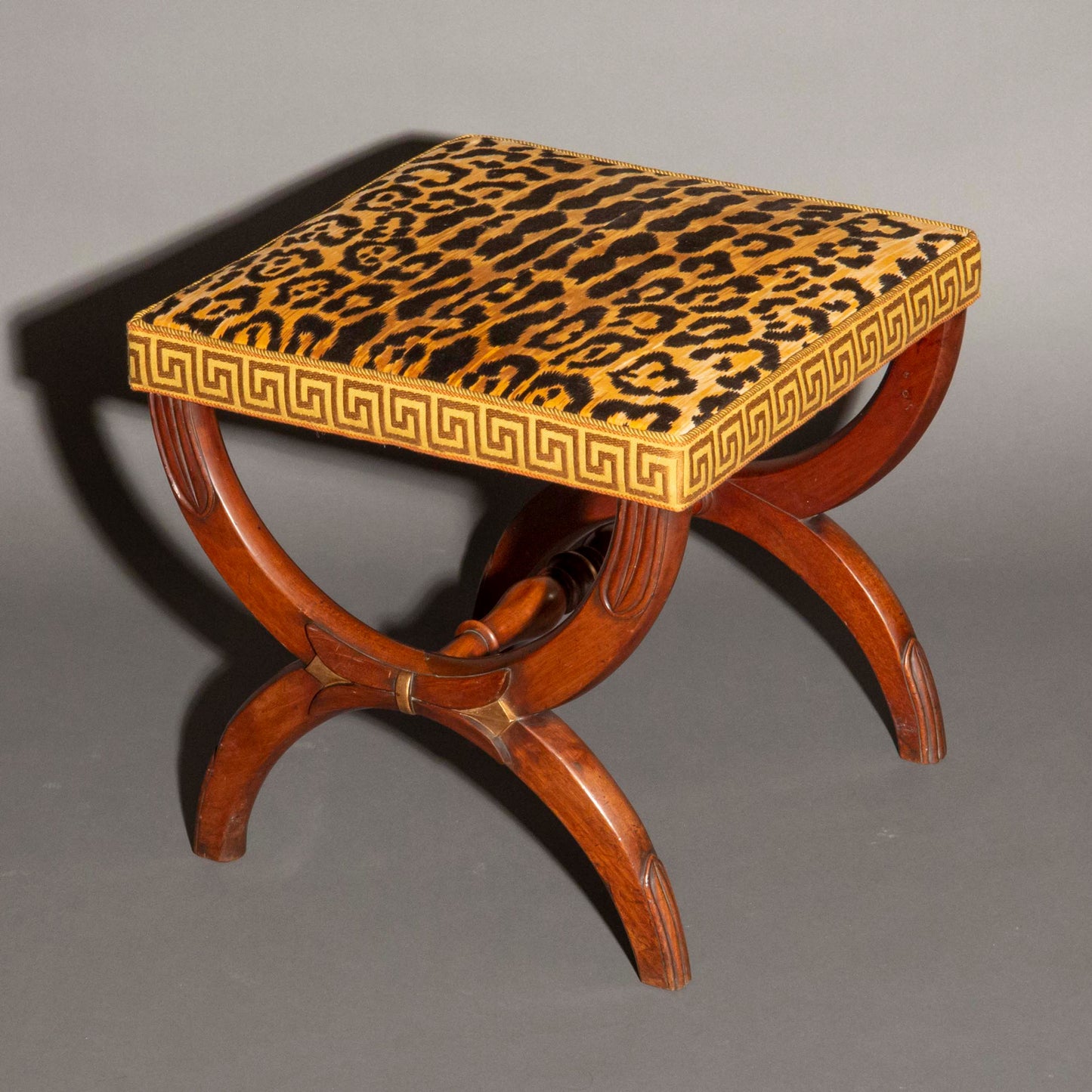
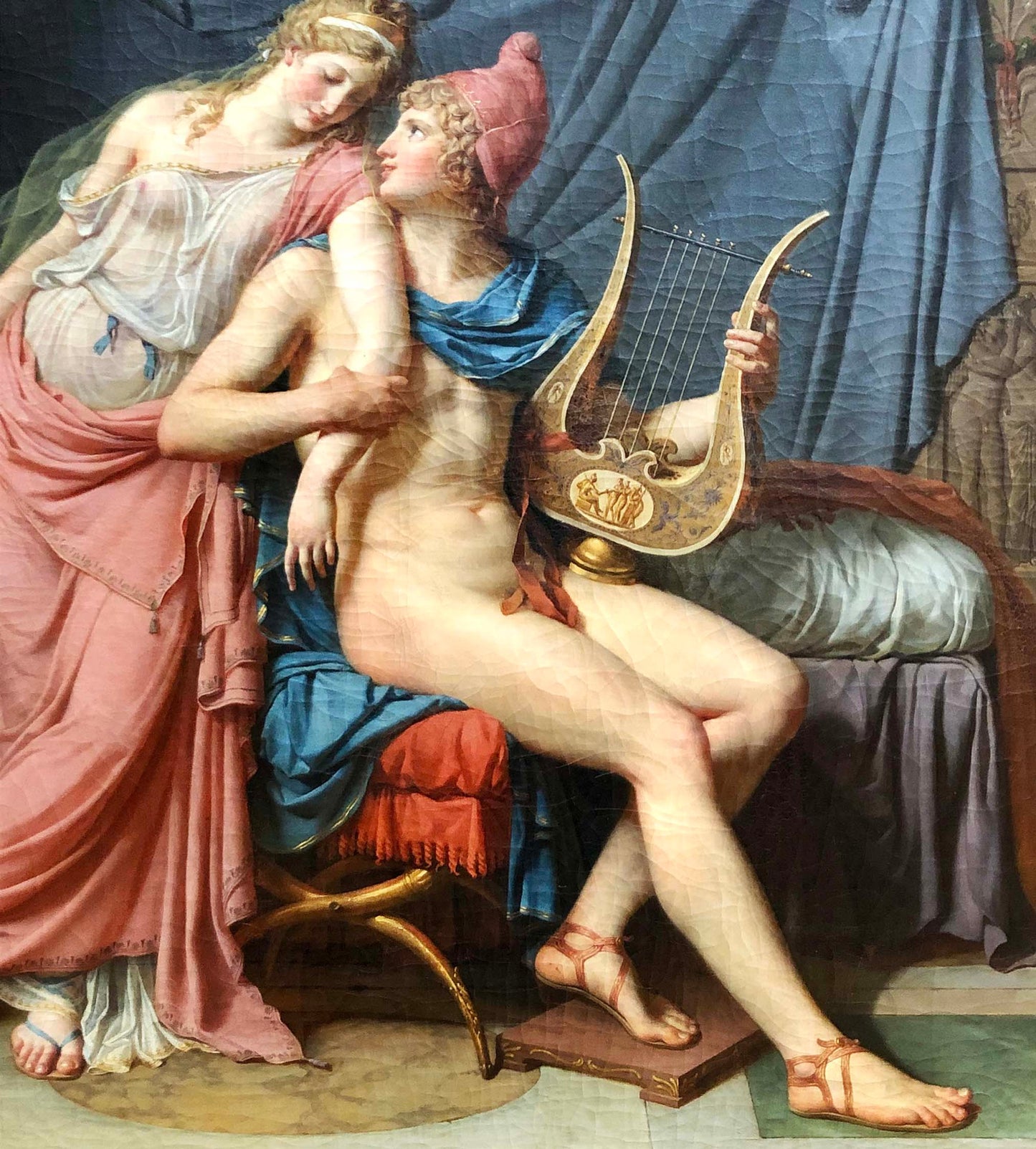
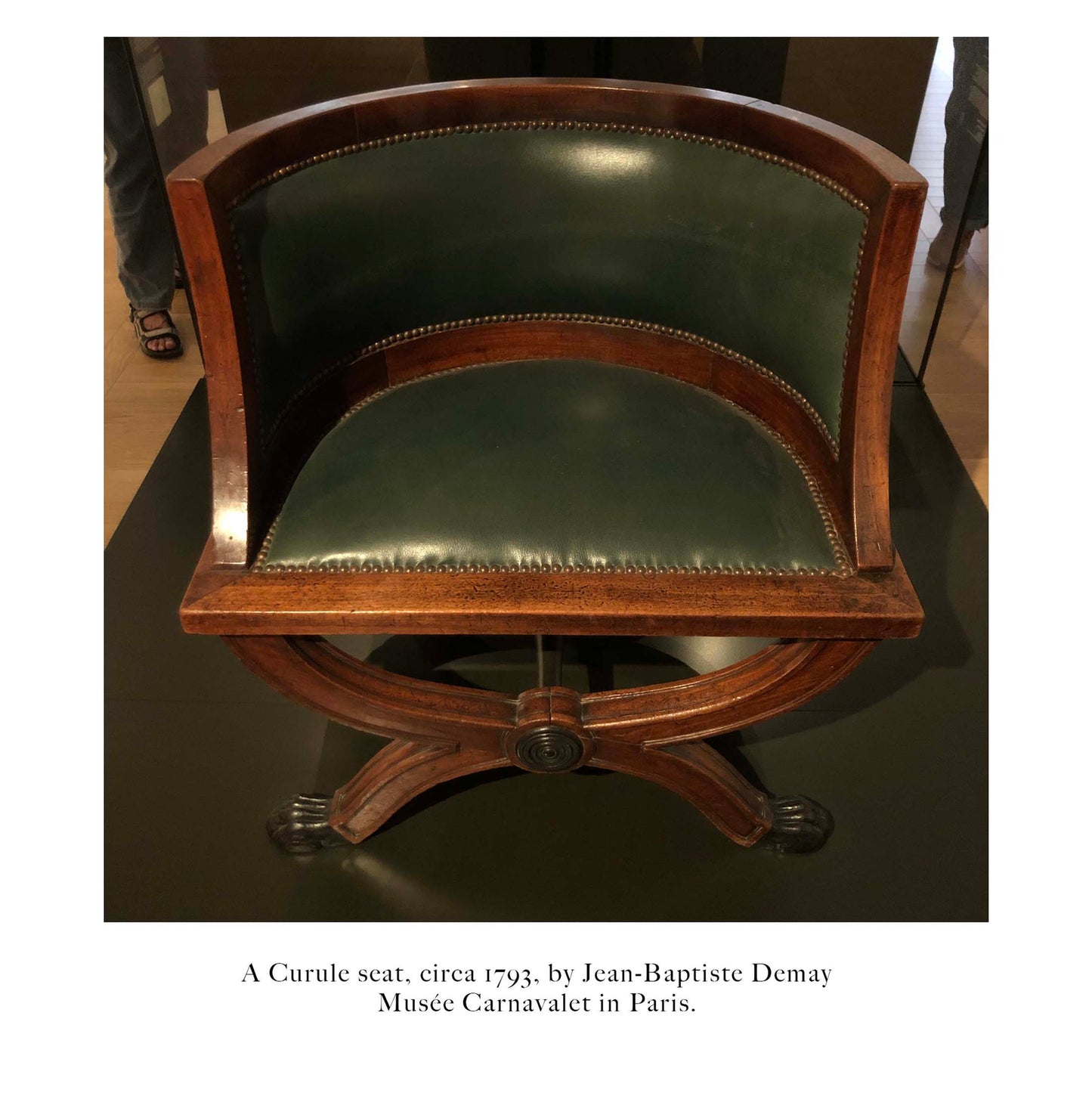
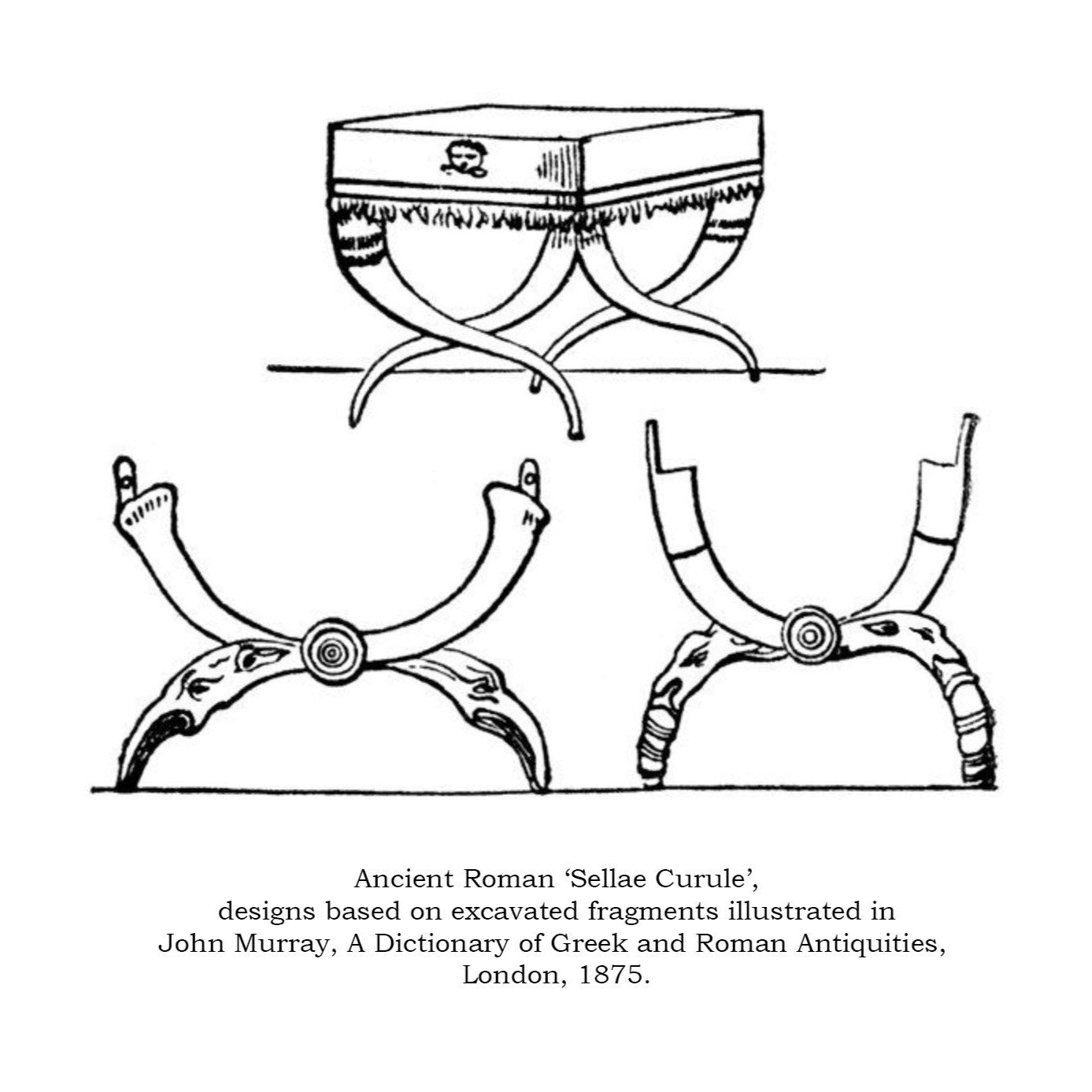
An elegant x-frame or curule-form stool in Spanish mahogany, beautifully upholstered in leopard print velvet with hand-sewn cord and Greek-key border.
England, Regency era, circa 1820.
Why we like it
Its form, inspired by classical antiquity, is both timeless and highly decorative. Beautiful original surface. Newly reupholstered, this handsome stool is an elegant accent piece for a classic or eclectic interior.
Sella Curulis, the chair of state, is derived by the ancient writers from currus (chariot). The sella curulis is said to have been used at Rome from a very remote period as an emblem of kingly power, having been imported, along with various other insignia of royalty, from Etruria. However, much earlier stools supported on a cross-frame are known from the New Kingdom of Egypt. A related design, along with two other ancient fragments from the Museo Borbonico in Naples, Italy, is illustrated in John Murray, A Dictionary of Greek and Roman Antiquities, London, 1875, p.520.
The form found its way into stylish but non-royal decoration in the archaeological second phase of neoclassicism in the early 19th century.
In France, the designers such as Charles Percier and Pierre-François Fontaine had created designs for stools and armchairs of curule form in the late 18th century. Georges Jacob is known to have executed a number of its variants, including a set of fauteuils for the French Supreme Court, in 1795. Another interesting example, by Jean-Baptiste Demay, is at the Musée Carnavalet in Paris. Jacques-Louis David, praised for the tremendous attention to detail in his paintings, depicted a fine example of a curule in his masterpiece Les amours de Pâris et d'Hélène, now in the Louvre Museum, Paris.

